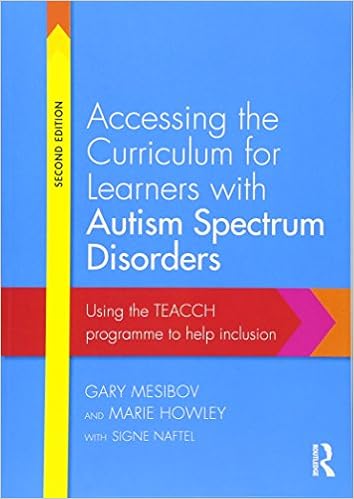Teacch Program And Autism


Contents • • • • • • • • • • History [ ] The TEACCH approach was developed at the University of North Carolina, originating in a child research project begun in 1964 by and Robert Reichler. The results of this pilot study indicated that the children involved made good progress, and consequently state finance supported the formation of Division TEACCH. Founded in 1971 by at the, TEACCH provides training and services geared to helping children and their families cope with the condition., a professor and researcher on UNC's TEACCH program since about 1979, was director of the program from 1992 to 2010. With over 40 years of experience of working with autistic people, TEACCH methodology continues to evolve, refining its approach.
TEACCH, also known as Structured TEACCHing is an educational program developed at The University of North Carolina at Chapel Hill. The acronym initially stood for. Structured Teaching--The TEACCH Method. Structured teaching via the TEACCH method was developed by Professor Eric Schopler and many of his.
Some Basic Information about TEACCH. And parents get up to speed with modern views on autism. The program in Antwerpen is pretty near to most of the. TEACCH (Treatment and Education of Autistic and Communication related handicapped CHildren) is an evidence-based service, training, and research program for.
It is a 'pioneering' program for assisting with education, research and service delivery for children and adults. Overview [ ] The TEACCH philosophy recognises autism as a lifelong condition and does not aim to cure but to respond to autism as a culture.
Core tenets of the TEACCH philosophy include an understanding of the effects of autism on individuals; use of assessment to assist program design around individual strengths, skills, interests and needs; enabling the individual to be as independent as possible; working in collaboration with parents and families. Strategies [ ] The emphasis on individualization means that TEACCH does not distinguish between people with very high skill levels and those with learning disabilities. Strategies used are designed to address the difficulties faced by all people with autism, and be adaptable to whatever style and degree of support is required. TEACCH methodology is rooted in behavior therapy, more recently combining cognitive elements, guided by theories suggesting that behavior typical of people with autism results from underlying problems in perception and understanding. The strategies put forward by TEACCH do not work on the behavior directly, but on its underlying reasons, such as lack of understanding of what the person is expected to do or what will happen to them next, and sensory under- or over-stimulation. By addressing communication deficits, the person will be supported to express their needs and feelings by means other than challenging behavior. Download Football Manager 2017 Editor.
Working from the premise that people with autism are predominantly visual learners, intervention strategies are based around physical and visual structure, schedules, work systems and task organisation. Individualised systems aim to address difficulties with communication, organisation, generalisation, concepts, sensory processing, change and relating to others.
Whereas some interventions focus on addressing areas of weakness, the TEACCH approach works with existing strengths and emerging skill areas. International recognition [ ] Most of the literature is of North American origin. The adoption of the TEACCH approach has been slower elsewhere. In 1993, Jones et al. Stated that there was insufficient use of the TEACCH approach in the UK to include it in their study of interventions.





